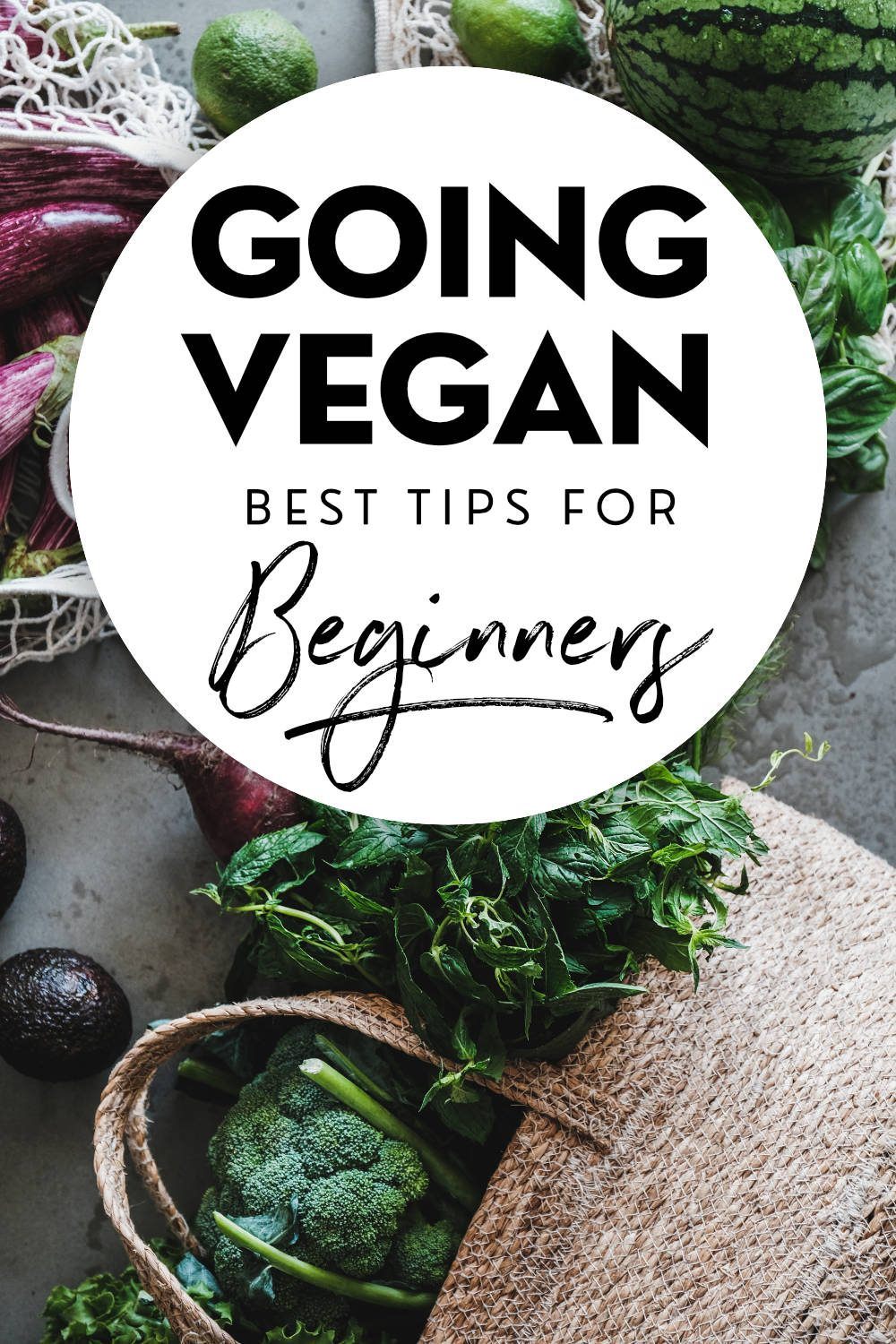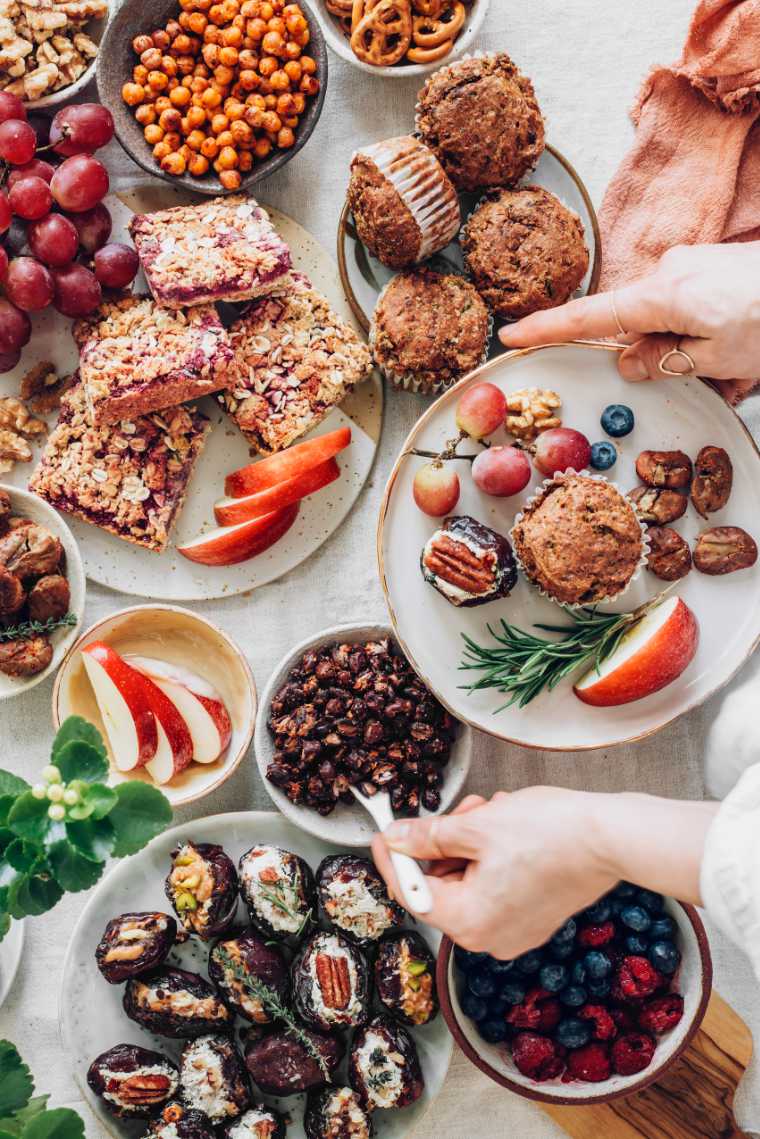Start a Plant-based Whole Foods Diet

Chances are you've come in touch with some reasons for going vegan at this point. Recent media coverage, as well as some major documentaries, have shed light on how shifting towards more wholesome vegan meals not only heals our bodies but also the planet as a whole – while saving countless innocent lives.
If any of these arguments for starting a plant-based diet have intrigued you, one of your next thoughts might probably be:
At least, that's what it's been like for us back 10 years ago. From going vegetarian and then dairy-free, we finally made our way to a whole food plant-based diet!
These days, transitioning to a vegan diet is so much easier, especially if you have someone breaking down the most important steps for you.
Let's dive right into them!
How To Start a Plant-Based Diet
Although we could have written so much more in this article, we decided to just stick to the following 12 tips on how you can start a plant-based diet! Come on board – we promise it'll be easier and more fun than you might think.
1. What's Your Motivation?
Since you made your way to our website, you are probably in a stage of your life where you are ready for some major changes.
Now, just take a second and become very clear about the goals you want to achieve by hopping on this plant-based lifestyle. What is important to you?
Maybe you want to get rid of some kind of disease, stay at a healthy weight effortlessly, increase your energy, help save the planet or animal lives – it doesn't matter. Anything that excites you to take further steps towards a plant-based diet is great.
Keep it close to your heart, write it down, research it regularly to stay in touch with your motivation and learn something new along the way… because the reasons for not eating animal products are endless and you might resonate with more and more over time.
You could watch some documentaries or YouTube videos to keep focused even when things get a little harder.
2. Eat Enough Food
This is something that confuses many in the beginning and can be different for everyone. Depending on what you were used to eating, the size of your meals will increase a lot!
Especially if you come from a diet high in animal products and processed foods, you really have to up your quantities when switching over to a plant-based diet.
That's because fruits, veggies, grains and legumes are less calorically dense compared to butter, cheese, eggs and meat. This is true especially when you focus on whole foods and lower fat plant-based foods.
Vegan Nutrition Guide (Free Download) →
So, load up on baked potatoes, quinoa, beans, salad and fresh fruit! If you struggle to eat larger portions, replace some of the veggies (especially raw veggies) with things like nut butter, seeds, avocado, pasta, bread or tofu to ensure you get enough calories and nutrients.
If you tend to have an insatiable hunger, then a whole food plant-based diet really is for you! Due to the high fiber and water content, it'll be hard to gain a lot of weight.
Especially for those who come from a restrictive eating background, it's important to remember to eat to your heart's content and never deprive yourself.
This isn't about 'everything in moderation', it's about living abundantly off the good stuff. Over time, your body will get used to these kinds of volumes.
Remember that everyone needs a different amount of calories each day and although we'd love for you to free yourself from tracking your intake, it can be a good idea to do so in the beginning to get a feel for plant-based foods – and to see how much you can actually eat!
Try to get rid of the 1200-1600 calories per day mindset and rely more on your natural hunger and satiety cues.
You can find our favorite beginner-friendly vegan recipes here and some easy plant-based breakfast ideas here!

3. Surround Yourself with Healthy Foods
Guess what, you cannot eat what you don't buy or have around you! Simple but true. Create a supportive environment by keeping your home as clean as possible.
This means browsing your kitchen in search of any food that isn't beneficial to you or that you plan on not eating anymore – either give it to someone else who'd like to eat it or simply toss it to not be tempted (we like to use local food sharing groups to donate the food we don't want to consume).
Don't keep it just because you've already bought it and think it'd be a waste not to use it. Your body is not a garbage bin!
The next step in helping yourself change your ways is to buy heaps of fruits and vegetables, potatoes and rice, beans, or nuts, so you're always able to prepare healthy meals and easy snacks.
Produce can also be bought frozen instead of fresh to prevent food waste – plus you always have something in the freezer to whip up a quick and well-rounded meal.
All of these foods, although they are healthy and unprocessed, have a pretty long shelf life which makes them very convenient.
Full Vegan Grocery List (Download) →
4. Prepare for Being on the Go
It's one thing to eat plant-based at home but what if hunger hits and you're out and about? Instead of ravenously looking for something that you could eat and being tempted to just grab a highly processed or animal-based option, you could make sure to always have some kind of snack with you.
This could mean some fresh fruit, nuts, energy balls or vegan bars – but also homemade wraps, sandwiches, grain-based salads or simply leftovers.
Other tips here would be to eat before you leave the house and know of a few locations you can grab some good plant-based meals or snacks. Here's an article on many common fast food and restaurant chains and what you can order there!

5. Make Food Swaps
Our advice is generally to take a gentle approach and slowly but steadily add more plant-based foods into your diet. We don't restrict, we replace!
Swap some of your favorite processed or animal-based food for a healthy alternative. For instance, to veganize your meals you could use avocado instead of butter, tofu instead of chicken and black bean burgers instead of beef.
To make more wholesome plant-based choices, have dates instead of white sugar, use whole grain instead of white flour spaghetti and have fruit as a snack.
Increase the amount of healthy vegan ingredients in your meals until you've crowded out the bad stuff.
14 Easy & Tasty Food Swaps →
6. Start With a Plant-Based Breakfast
Three vegan main meals per day can seem a bit daunting when you're just starting out. But how does chocolate oatmeal for breakfast sound? It's just one delicious, easy and healthy way to start your day.
Usually, breakfasts are the easiest meals to veganize. Think pancakes, chia pudding, peanut butter and jelly sandwich or savory options such as tofu scrambles with potatoes or avocado toast.
And there are a lot more are vegan breakfast options out there such as our easy recipes for:
- Fluffy blueberry muffins
- Raspberry banana bread
- Sweet potato smoothie bowl
- Easy gluten-free oat bars
- Strawberry protein smoothie
These easy plant-based breakfasts will inspire you to move on to a healthy vegan lunch, which is the next meal you can tackle. Once you feel confident to have a fully plant-based breakfast and lunch, move on to dinner.
Continue until you have all meals and snacks transformed into plant-based ones. Tip: Our favorite lunch is just leftover dinner!
Vegan Breakfast Guide →

7. Educate Yourself
There is a lot of misinformation out there and you will run into more than just one conversation about how unhealthy, complicated or useless a vegan diet is.
We've all been taught that animal products are part of a proper diet and it's understandable that people around you are opposed to the idea of eating only plants. Whether it's real concern, curiosity or being offended on their part, having a few facts on hand is always a good idea
Lots of huge organizations like the Academy of Nutrition and Dietetics have stated that properly planned vegan diets are healthy for all stages of life, lots of doctors and dietitians recommend eating a plant-based diet for the prevention of chronic diseases – plus there are anecdotes and real-life examples of people thriving on plants.
A fun way to stay on top of new information is to listen to some vegan podcasts while commuting or doing some work around the house!
On top of the aforementioned documentaries and YouTube videos, you can also grab some wonderful books about veganism and plant-based eating. Or just start by browsing our blog for some informational articles!
Top Vegan Books (Full List) →
8. Find Like-Minded People
Human beings are social creatures. We're highly impacted by the people we surround ourselves with and one of the most common reasons why vegans go back to animal products again is social pressure.
Feeling alone in your quest and having to justify, organize and explain yourself over and over again can become so tiring, and, in the end – not worth it anymore.
As much as we want to inspire not-yet-vegans to try plant-based eating for a while and take a look at the reasons behind veganism, we also want to prevent more ex-vegans.
We often hear from our readers that they don't have any support at home from their families – which is why we highly recommend reaching out online and joining a virtual vegan group somewhere.
A good place to start would be Facebook (you're always welcome in our private group here) where you can search for vegan or plant-based groups – some of which might even be in your local area!
Having someone to talk to about delicious plant-based food and have the opportunity to rant, or ask for help if you're looking for a specific product, is invaluable. There are many other platforms like Meetup to get in touch with like-minded people in real life.
After a while, you might even influence some friends or family members to try more plant-based meals and get an ally that way – who knows. Let the results speak for themselves and people will become curious at some point. We definitely are a growing movement, so let's all connect!

9. Equip Your Kitchen
Similar to stocking up on plant-based staple foods, you should also make sure to have some basic kitchen tools at home.
From things like a cutting board, sharp knives, baking sheets, pots and a nonstick pan to a small immersion blender or personal blender, pressure cooker and spiralizer – these tools will open up a huge world of meals you can create.
No need to spend a ton of money, you can ask around if someone has a spare tool or can lend you a specific one to see if you'd become a regular user.
Sometimes, you can also get a good deal over at Amazon or other online stores if you keep an eye on an item you'd love to get. See our article below for more details!
Full List of Kitchen Tools →
10. Gently Create New Habits
Be loving and kind to yourself. If you haven't reached your goals yet or feel like you're not doing things perfectly, don't beat yourself up. Keep your dreams and visions in mind and work towards them, but accept where you are right now and take it step by step.
Your thoughts have a bigger impact on your perception and reality as you might think. It all just comes down to creating new habits so eating a plant-based diet feels like second nature to you.
Putting yourself down or under pressure can cause a spiral of negative beliefs and events, so don't forget about the big scheme of things and adjust your expectations according to your own pace. When you become your biggest fan and supporter, your success is much more likely.
Go back to some of the tips above and take things meal by meal.
Stop Junk Food Cravings (Download) →

11. Keep Things Fun & Exciting
Once you have dabbled in vegan waters and tried to make plant-based versions of your favorite meals, you can take it one step further. There are probably quite a few dishes you've never even heard of or foods you haven't tried.
During your next visit to the supermarket, pay attention to all the different types of fruits, veggies, beans, lentils, grains, nuts and seeds and choose one or a few that look interesting and which you have never eaten before.
Browse the internet for ideas on how to cook amazing new meals that you can implement as a weekly dinner option.
And if you're more of a snacky convenient type of person: so many packaged food options these days are plant-based and can be sent to your doorstep, should you not find them at your local store.
Best Vegan Subscription Boxes →
12. Make a Solid Commitment
Now that you have created a good foundation for your plant-based lifestyle, it's time to commit. Choose a few weeks or a month during which you'll try to put everything into action and really follow through.
Clean out your kitchen or kitchen space, have all kinds of plant-based staples on hand, keep a list with your favorite plant-based meals and snacks around, and enjoy every single bite!
Maybe following some fellow vegans on social media could give you some additional inspiration and help you feel less alone.
It's only when you decide to make this happen that the transformation will take place and you'll be able to recognize all of the amazing benefits of living this way.
Bonus: Free Vegan Transition eCourse!
Join our free 6-part online course to learn how to transition to a plant-based diet the easy way with proper nutrition education, downloadable recipes, shopping lists, meal plan and blueprints for creating easy and tasty vegan recipes.
Start a Plant-based Whole Foods Diet
Source: https://nutriciously.com/start-a-plant-based-diet/